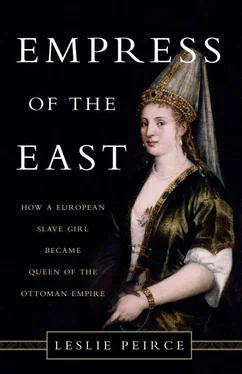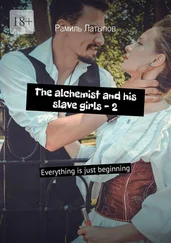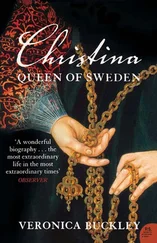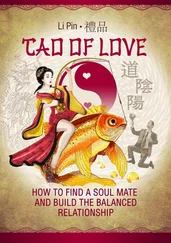Nurbanu’s contributions to Selim II and Murad’s reigns, 312–313
overseeing the management of a prince, 84–85
peace treaties: Safavid empire, 295–296
public initiation of the princes, 108–109
quasi-constitutional sovereignty, 314–315
religious policy, 291–292
Roxelana’s marriage giving women a voice in, 122–123
Seljuk influence on Ottomans, 18–19
state building within the Ottoman Empire, 164
under Selim II, 304
under Suleyman, 67–68
Gritti, Alvise, 158–160, 162
Gulfem, 35, 75–77, 142, 260, 300
Gurji Khatun, 229
Hadice (Suleyman’s sister), 156–157
Hafsa (Suleyman’s mother)
background and tenure of, 20–21, 34–35, 114
care of the royal family, 85–86
correspondence with Suleyman, 79
death of, 11–12, 113, 127
female entrepreneurs, 39
Ferhad’s execution, 38
gift of Roxelana to Suleyman, 34, 69–71
harem hierarchy, 36
informational networks, 140
philanthropic projects, 88, 171–172, 187
Roxelana’s rise in status threatening Mahidevran, 94–95
Selim I’s aspirations to the throne, 69–70
stipend, 90
succession concerns, 64–65
Suleyman’s relationship with, 32
Sultaniye complex, 232
upgrading the New Palace, 123
Hagia Eirene (St. Irene), 49(fig.), 50, 129
Hagia Sophia, 48–50, 94, 194, 266, 313
Hall of the Maidens, 45, 46, 51, 53, 119, 121–122
Hammer, J. von, 68, 220
Hapsburg, House of, 72–73, 101, 108–109, 145–146, 158–160, 162–163, 184, 205, 224, 237, 254, 287, 307
harem, imperial, 136–138
financial management, 77–78
Hafsa’s position in, 34–35
hierarchy of the Old Palace, 27–29, 34–36
New Palace, 11–12, 27–29, 35–37, 43, 45–47
Roxelana’s daily life during Suleyman’s military absences, 75–77
Roxelana’s royal responsibilities for, 11
See also concubines, New Palace; Old Palace
Harun al-Rashid, 165, 194, 292–293
Haseki foundation, 178(fig.)
choosing a site, 172–176
controversy connected to, 184
daily life and personnel, 181–184
following imperial traditions, 266–267
healing services provided by, 268
madrasa, 180–181
planning the mosque, 176–177
political significance of, 172
services and amenities, 177
staff requirements, 179–180, 268
Suleyman’s endorsement and financial support, 189–191, 193
Hatuniye foundation, 231
Hayreddin Barbarossa, 140–141, 201, 219, 312
Helena (mother of Constantine I), 290–291
Henry VIII, 8, 61, 104, 153, 167
hierarchy of the Old Palace, 27–28
hippodrome, 50, 104–105(fig.), 108, 137, 146, 204, 258, 313
Holy Roman Empire, 14, 73, 103, 159, 292
honeymoon of Roxelana and Suleyman, 71–72
hospitals, 9, 47, 88, 112, 170, 184, 187, 232, 264–268, 300
Huma Shah (Mehmed’s daughter), 232, 235–236, 241–242, 244, 260, 262, 282, 300
Hungary, 72–73, 82–83, 162–163, 223
Hurrem (Ottoman name of Roxelana), 4, 30, 52, 144, 303, 319
Husnushah (concubine of Bayezid II), 86, 88, 231
Ibn Battuta, 19–20
Ibrahim (Suleyman’s grand vizier), 90, 197
background and career, 154–157
blame for Suleyman’s errors, 161–162
conflicting descriptions of his virtues, 161–163
conversion, 161–162
execution of, 150–154, 160–161, 163
Mustafa’s jealousy, 95–96
Roxelana as gift from, 32
Roxelana’s relationship with, 165–166
Suleyman’s relationship with, 167–168
Imperial Council (Divan), 37, 77, 105, 109, 130(fig.), 140, 155, 226, 237, 250, 263, 294
interregnum rule, 7, 285, 309, 312–314
Iraq, 17, 116, 145–146, 149, 286, 296
Isabella (queen of Hungary), 223–224, 254
Iskender (treasurer), 156, 160–161
Islam, 111, 116. 133. 265(fig.), 278
calendar, 111, 139, 164, 208, 237, 249, 289
conversion of slaves, 4–5, 42–44, 83, 185, 224
emancipation of slaves, 24, 35, 54, 113–114, 118–119, 184–186, 212, 223
holy men, 75, 284
Ibrahim and Islam, 156
Istanbul’s built landscape, 46–50
and law, 35, 54, 58, 78, 85, 113, 115, 176, 207
pilgrimage, 118, 262, 265, 290–293
and philanthropy, 9, 170–171, 192
Roxelana’s charitable actions, 9, 289–294
Roxelana’s conversion, 33, 192,-193, 291–292
shi`i and sunni, 107, 161, 164, 172, 228, 255, 296
status of non-Muslims in, 42, 47,126, 215, 296
teachers at the Haseki Avrat, 179
women’s chastity through seclusion, 126–127, 213, 251
See also dervish; madrasa; philanthropy; sufi
Ismail, Shah, 65, 66, 146, 261
Istanbul
Blue Mosque, 313
built landscape and attractions, 46–50
Haseki Avrat, 173–174
Kagithane, 264
Janissaries
antipathy towards Roxelana, 148–149
engagement in Anatolia, 117
infantry corps, 10, 60
Iranian campaign, 269
Mustafa’s popularity, 73
refusal to obey Selim II, 310
revolt of 1525, 96, 162, 258
Roxelana’s generosity toward, 240–241
Jerusalem, 137, 170, 194, 261
rebuilding, 164–165
Roxelana’s foundation, 288–293
Suleyman’s project, 288–293
jewels and ornaments, 57, 96–97, 158, 159(fig.), 189, 213, 263
John VI Kantakuzenos, 198
Judaism and Jews, 9, 60, 126, 140, 158, 213, 223, 227, 238, 289, 292, 312
tradeswomen, 39, 114, 140, 158, 213
Justinian I, 48, 194
Ka`aba (Mecca), 265, 265(fig.)
Karaman, 214–215
Khadija (first wife of Prophet Muhammad), 293
Khosraw (Chosroes), 168–169, 216
Knox, John, 315
Konya
Bayezid’s post, 241, 243
family reunion at, 226–227
history of a royal presence, 201
Selim (son)’s post, 214–216, 226–227
Korkud (Suleyman’s uncle), 65–66, 86, 92, 216
Kosem (dowager queen), 315–316
Kutbeddin el-Mekki, 301–303
lalas (tutors), 84–85, 110, 202, 217, 233, 308
literature, educational and entertainment value of, 169
Lituanus, Michalon, 24–25
loyalty to the dynasty, 42–44, 272, 286
Lutfi, 189, 193–194, 204–208, 230
madrasas, 46–47, 170, 173.180–181, 190–191, 266
Mahidevran (concubine, mother of Mustafa)
arrival in Istanbul after Selim I’s death, 93–94
as role model for Roxelana, 57
background and training, 84, 88–89
circumcision of the princes, 106
eligibility of sons to succeed their father, 249
emergence into politics, 101–102
harem hierarchy, 36
Haseki foundation, 188
increasing power at court, 90
life in Manisa, 90–92, 109
Mustafa’s execution, 270–272
Mustafa’s harmony with Roxelana, 83
Mustafa’s provincial government, 216–217
public opinion, 7–8, 83, 150, 270–271, 310
retirement, 310
rivalries among the princes, 10, 62, 79
rivalry with Roxelana, 90–91, 94–99, 148–149
Mahmud (Suleyman’s son), 35–36, 54–55, 64, 67
Mamluk dynasty, 10, 66, 104, 107, 157, 160, 262
Manisa, 82–85
family reunion, 237–238
Hafsa’s foundation, 88, 113, 148–149, 165, 186–187
Mahidevran’s life in, 90–92, 109
Mehmed’s post, 214–216, 226
Roxelana’s travels to, 231, 231–232
royal presence, 201
Suleyman’s post, 34–36, 52, 65–66
Marlowe, Christopher, 198–199
marriage
arranged, 37–38, 91, 115
French-Ottoman alliances, 14
Ibrahim’s lavish wedding, 156–157
Mihrumah and Rustem, 205–208
of harem women following palace service, 11–12, 138, 211–212
Читать дальше












